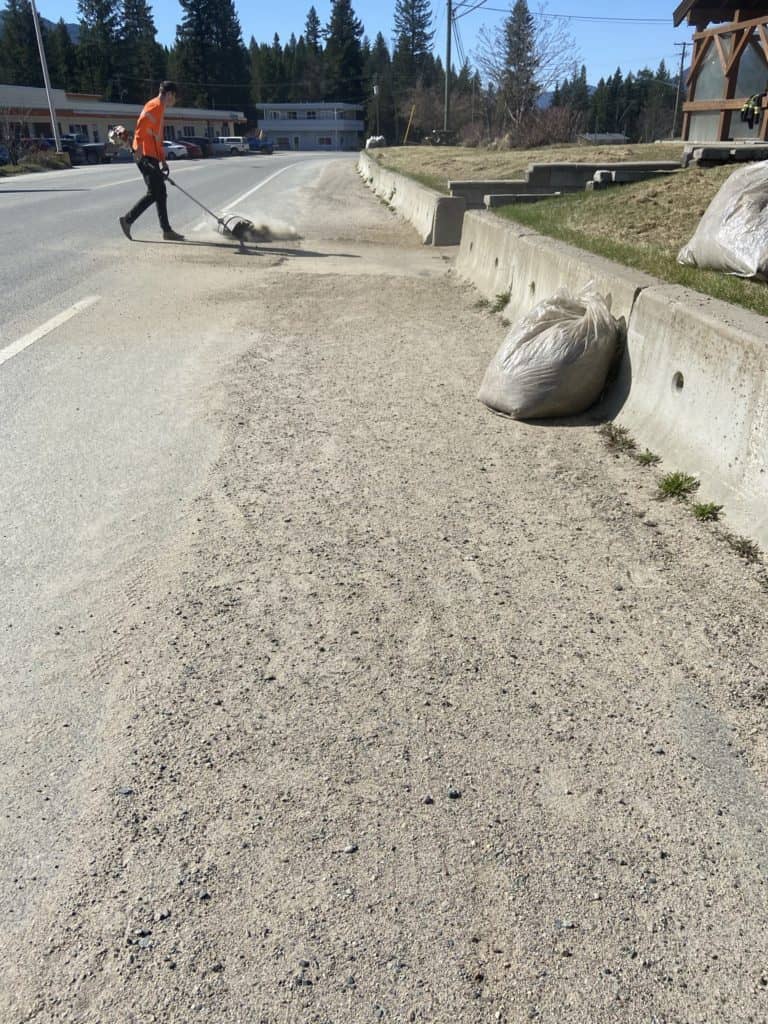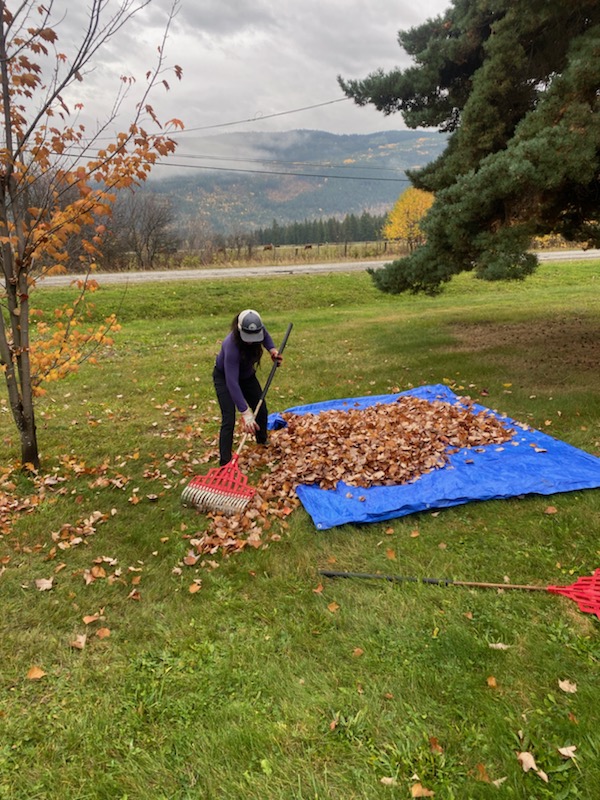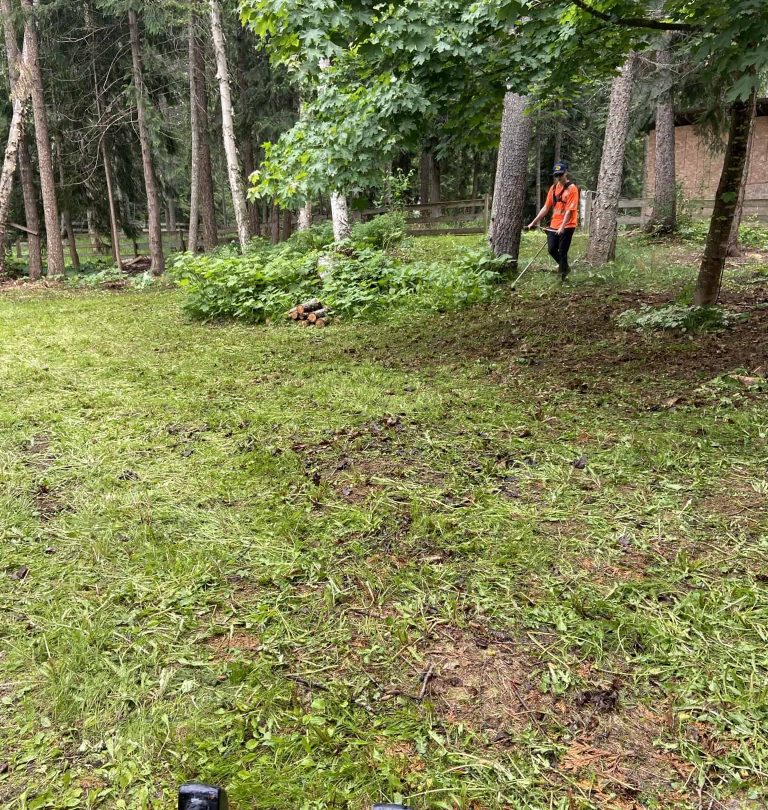Seasonal Clean Up
Seasonal Clean Up Services
Mac River Enterprises Ltd is qualified to provide expert brush and vegetation management. MRE can customize to your individual needs be they few or many, large or small. Seasonal clean up is the key to maintaining a healthy, productive environment for every aspect of your landscaping needs. Spring clean up is an essential aspect of yard maintenance, and prepares your property for the season.
Benefits of Seasonal Clean Up
- Protects yourself and others from injury or structural damage.
- Provides qualification for home insurance.
- Reducing underbrush limits the spread of invasive species.
- It will also fire smart your home and property.
Contact Us for Snow Removal!

Examples of
Spring Clean Up Services
We offer a wide variety of spring renovation techniques.
Start your project this year with renewal and and rejuvenation.
- Debris and gravel removal
- Power Raking
- Aerating
- Fertilizing and Seeding
- Spring Pruning
- Small Garden Rototilling
- Irrigation Restart
- Power Washing
- Planting
Examples of
Fall Clean Up Services
We offer a variety of techniques to keep plants, pests and debris in check.
Our crew works hard to help you prepare for winter.
- Pruning
- Debris Removal
- Mulching
- Irrigation Blowouts
- Hedge Trimming
- Clean Out Annuals
- Dead Heading
- Fertilizing
- Final Mowing

View Our Seasonal Clean Up Projects!
Answers to Common Questions:
Early Spring: Trim back semi-woody perennials, like Russian Sage and Butterfly Bush.
Early Summer: After spring blooming plants have flowered, you can trim them back. For spring bulbs, wait until the foliage yellows.
Summer: Deadhead annuals and flowering perennials. Prune back some of the branches to encourage fuller growth.
Late Summer Through Fall: Deadhead annuals and perennials as needed. Once the plants are spent in the fall, remove annuals entirely and trim back perennials to about 3 inches (7.5 cm) above ground.
To trim or not to trim Perennials… In general, the rule is to trim back your perennials in the fall. This keeps the garden looking tidy, makes room for spring growth, and helps manage disease if you see any signs on the plants. If you do, dispose of that plant material, do not put in the compost pile
Some gardeners like the natural look of dead plants in the winter garden. Some plants even add great visual interest in the colder months. For instance, try leaving ornamental grasses untouched until spring. they look striking in the winter landscape. Another reason to leave dead floiage is to provide food and habitat for wildlife.
If your property is looking somewhat shabby, look for undergrowth. Removing it will make your property look neat improving its overall appearance. If you are planning to sell your home, curb appeal will give a good first impression to a potential buyer.
- Leaf and Debris Spring Clean-up: Helps remove the material, promote water absorption, and increase the effectiveness of fertilization.
- Lawn Cut: The first cut makes your lawn look clean and prepares it for the summer months. It encourages new growth and cleans anything leftover after power reading.
- Aeration: It is best to aerate your lawn at least once a year in the spring to have a lush green lawn. It allows oxylene to reach the roots, ensuring the proper absorption of nutrients and water and nourishing your yard. You can use an aeration machine to punch holes in the turf to relieve soil compaction and control thatch
- Spring Fertilizer: If you want a thick,green, and healthy yard, adding fertilizer can help. Fertilizing a freshly aerated lawn gives it a nutrient boost and promotes the growth of grass.
- Insects Love Moisture. Moisture will quickly accumulate underneath those layers of leaves, in either spring or autumn, and that moisture is bound to attract all sorts of insects. These insects can be annoying or creepy at best, but if they get too cozy they can harm the grass and other plants on your property.
- There are some species of insects whose eggs are laid in the summer and hatch in the autumn, including grubs. In the summer the adults can cause damage that is not noticed right away. But that damage will become noticeable by autumn. When you are cleaning up your yard to prevent new bug problems, keep and eye out for signs of existing insect damage such as irregularly shaper patches of dead turf.
- Pests Love Cluttered Environments. Rodents like to hide underneath the shelter that layers of fallen leaves provide. Others like to come digging around for any insects or insect eggs. This might remove one issue but you are trading it in for another, as pests can easily damage your lawn by digging and burrowing. Not only that, but pest problems in your yard can quickly lead to pest problems inside of your home.
- Mold And Fungus Thrive. Anywhere there is excess moisture, there is a chance for mold and fungal growth. Much like insects, mold or fungus can damage your lawn right before it goes dormant for the winter, making it impossible to properly treat until the following year. It’s not uncommon to find yourself dealing with multiple issues of mold, bugs, and pests at the same time.
Brushes, shrubs and small trees that grow beneath large trees are refereed to as undergrowth or underbrush. Having undergrowth on your property is undesirable for its appearance and to some types of plant life. Some of the growth can be poisonous and also increase the chance of a fire spreading.
Some plants are happy on their own, but many perennials will need deadheading in the fall to help them overwinter and your back-yard will end up looking tidier. You may find that the plants you prune have even more flowers come spring and summer. Tender plants and bulbs, such as Calla Lilies, can’t overwinter outside in most areas of the country. Plant them in containers and move them into your garage to protect them from frost. Just check on them once a week to ensure the soil isn’t too dry. Geraniums can be brought into the house and watered regularly as a house plant.


